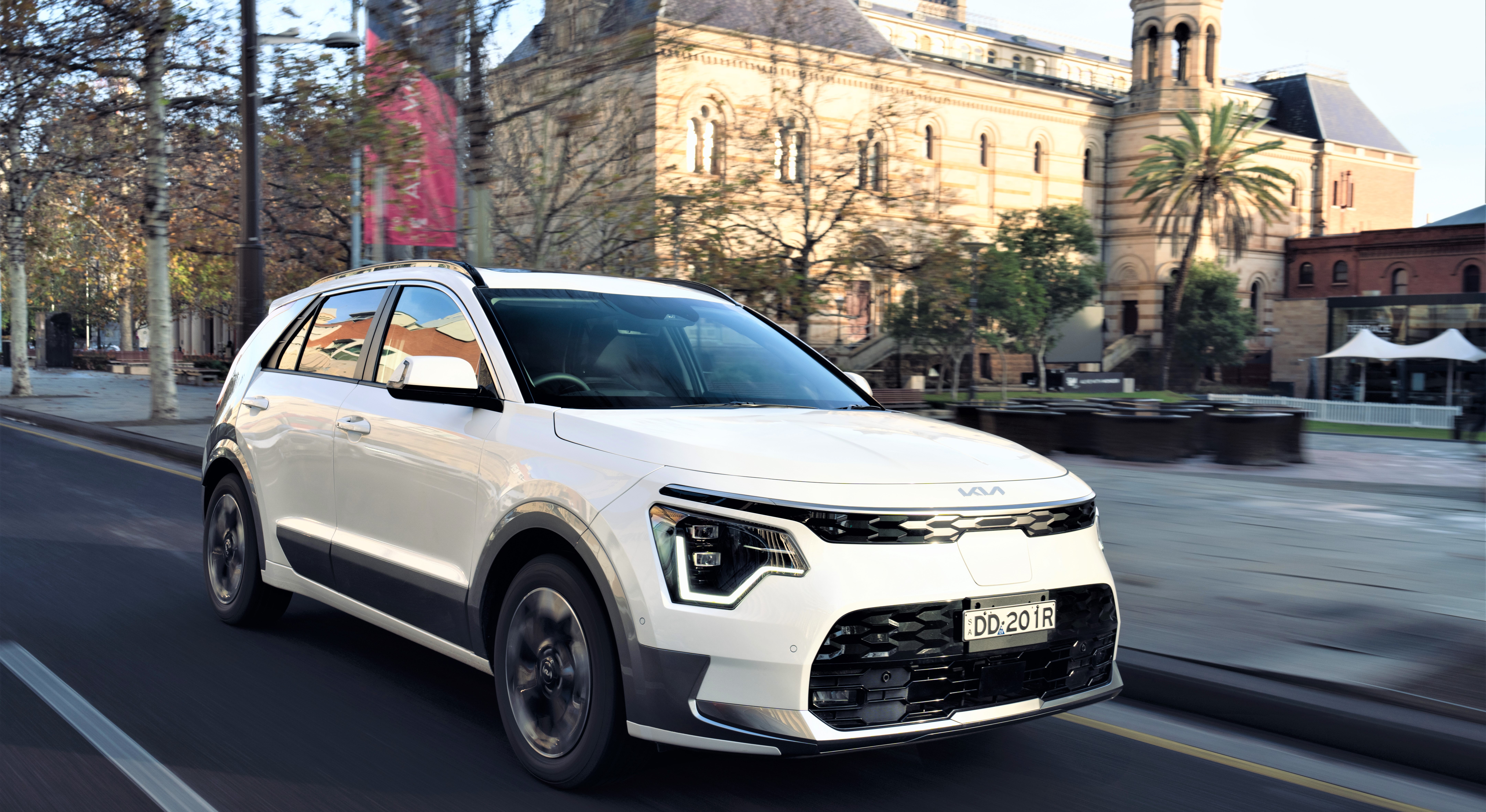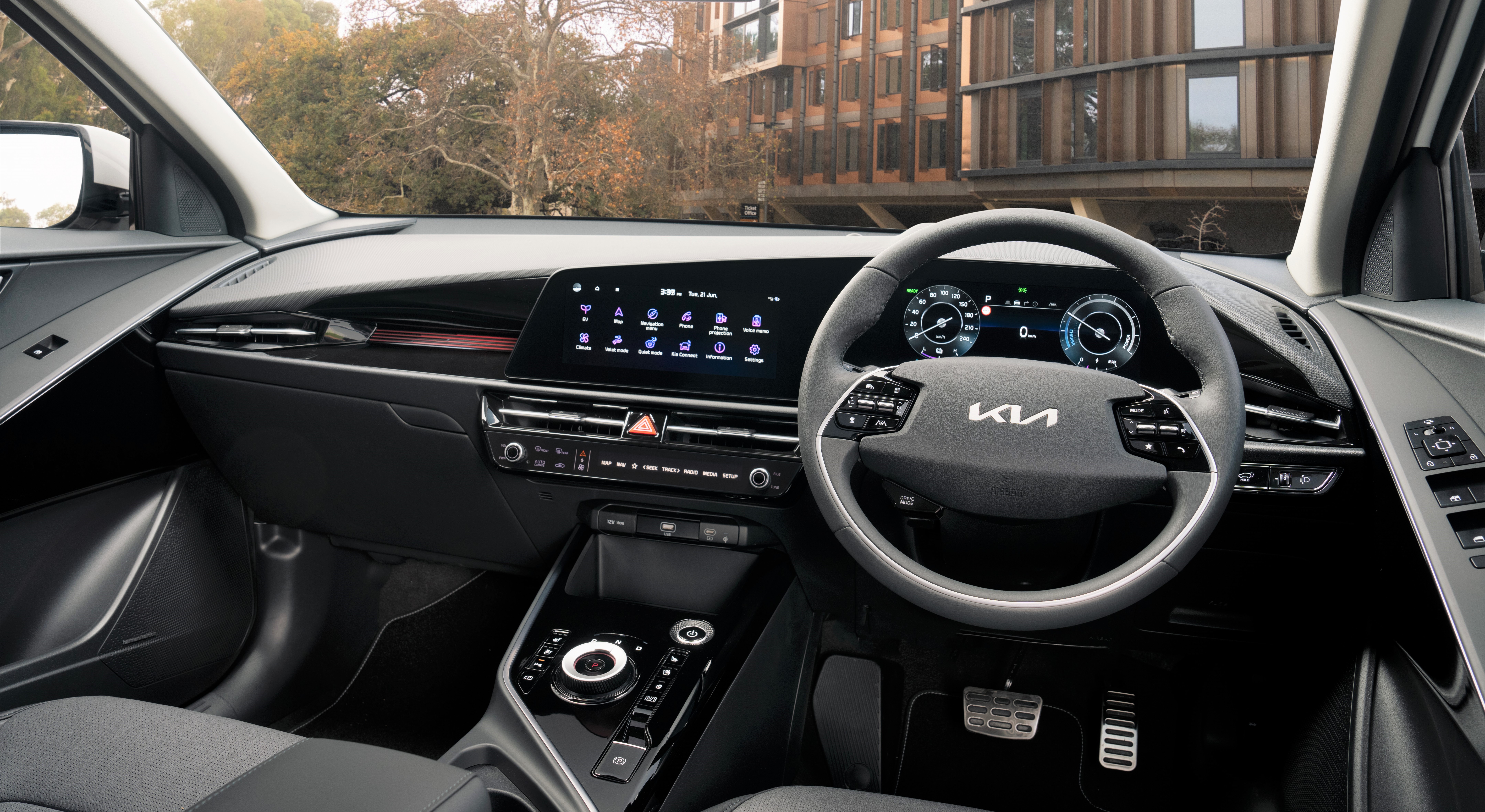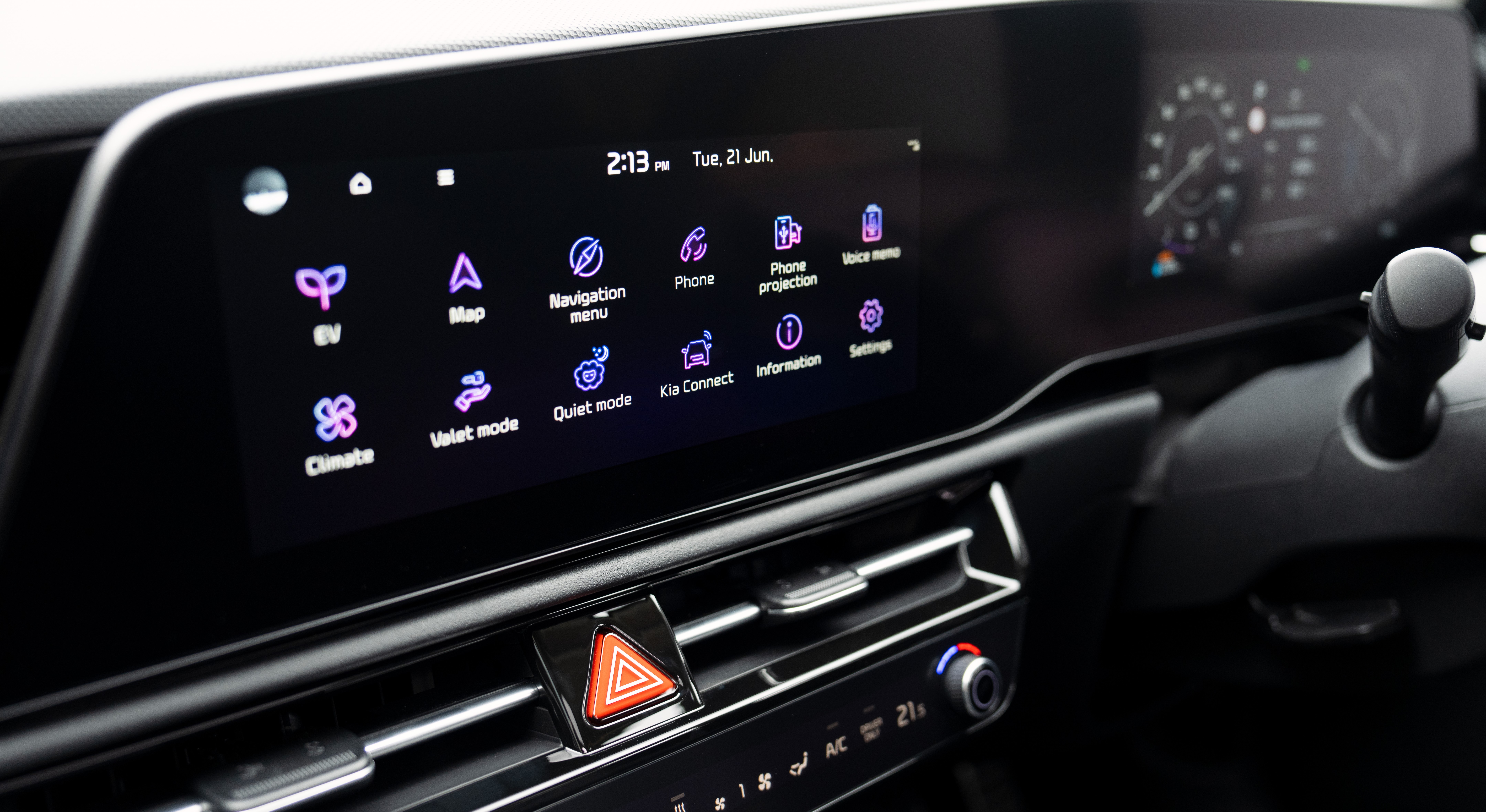Our first impression of the new Kia Niro

In the charge to bring more EVs to market, Kia has released their second-generation Niro, available in either electric vehicle (EV) or hybrid versions.
Good looking, with respectable range and power, it’s bound to become as big here as it is overseas.
Value for money?
The good news is the EV S base model should be eligible for the $3000 State Government EV rebate – plus three months free registration – because it’s under the $68,750 threshold. The bad news is that the EV is $20,000 more than the hybrid, so it’s a big price step-up to get the cleaner tech. Kia doesn’t think it will be a major deterrent and expects two out of every three Niros sold will be the more expensive EV version.
There’s no plug-in hybrid but Kia says a plug-in version could be on the market soon if there’s demand for it.

Kia has an industry leading seven-year warranty with unlimited kilometres. However, similar to the slightly more limited warranties other car makers are offering, it only covers the high-voltage parts and EV battery for seven years or 150,000 kilometres, whichever comes first.
The Kia Niro EV is expensive and is out of reach of most budgets, but it has good specs for the price in this segment.
Design and function
Every new Kia model is bigger than the last and the Niro is no exception. Front and back passenger room is sufficient but there isn’t much space for rear passengers to tuck their feet under the front seat for a little more legroom.
The cabin is cleverly designed, from the household-type power outlet below the rear seat for charging laptops and other appliances, to the cargo screen that can be folded and conveniently stored when not needed. The rear trim on the front seats is hard, black plastic with USB ports set into both seats, so the rear occupants can charge their phones or game consoles. Hard plastic is used throughout the cabin and, while durable, may mark easily.
The standout interior feature in the EV is the screen. The base model HEV S comes with a 4.2-inch, multi-function LCD cluster. The trim in the EV S incorporates a 10.25-inch digital cluster with an eight-inch AV touchscreen.
The GT-Line models have the big kahuna of all screens – a panoramic digital display that integrates both the instrument cluster and infotainment features into one 21-inch package. There isn’t an analogue gauge in the car – everything you need is on the digital display.

There’s a separate airbag that deploys between the front seats to prevent occupants banging into each other during a side collision.
The EV GT-Line has what Kia calls its Premium Relaxation Front Passenger Seat, which can fully recline at the touch of a button while the car is parked or charging, so you can get comfy while you wait.
The cargo space is good for the class and there’s a small storage compartment under the bonnet for charge cables and other compact gear. There’s no spare wheel in the EV, whereas the hybrid has a space saver tyre.
Externally the Niro is a stylish, good-looking car. GT-line vehicles can have a different coloured C pillar design that’s quite distinctive.
Kia Connect app
An interesting development is the all-new Kia Connect, which is available in the GT-Line models. Its Kia’s all-singing, all-dancing connected car app that allows you to use your phone to do everything, from remotely starting the engine in the hybrid versions, to turning on the climate control or seat heaters. It can even be used to schedule the EV to start charging at a specific time of the day, to benefit from cheaper off-peak power prices.
For extra safety, there’s automatic collision notification and emergency call (E-Call) that can be activated by pressing the SOS button. If the car is involved in a crash that deploys the air bags, the Kia Connect 24/7 call centre will be automatically contacted through the vehicle’s embedded SIM card.

The SOS button can also be used to contact the call centre in situations like a medical emergency or if the vehicle occupants feel unsafe. If someone breaks into the car or damages a door lock in an attempt to break in, an alarm notification will be sent immediately.
In the unlikely event that the vehicle is stolen, vehicle tracking can be activated. If required, the police can request an authorised call centre agent to remotely immobilise the car via Kia Connect.
If the teenagers are using the car, parents can be alerted if it’s being driven in preset no-go areas or outside of set time frames.
Power up
The exterior charge point of the EV can be used to send electricity in the opposite direction, to deliver modest 240V power to any normal appliances up to 3.6kW – handy if you’re camping. It can even be used to trickle charge another EV that’s low on charge.
The Niro’s 64.8kWh battery pack contains enough energy for a claimed 400km-plus range. A 100kW DC fast charger can take the Niro EV from a 10 to 80 percent charge in 45 minutes, although you’ll need about 9.5 hours to get a full charge on a 7kW wall box.
On the road
Dealing with the hefty 1.7 tonne mass of an EV would be a suspension engineer’s nightmare. Kia has taken even further steps to ensure the suspension and steering is suited to Australian conditions.
The EV battery is under the floor, whereas in the Hybrid it’s under the rear seat and boot, allowing the mass to be carried down low to reduce the vehicle’s centre of gravity and to help with handling.
Although the suspension is firm, it does a pretty good job dealing with the bumps and rebounds of winding Adelaide Hills’ roads. The S models, with their smaller wheels and higher profile tyres, deliver the best ride. The cabin’s quietness can make judging speed a little deceptive. Without the normal powertrain noise cues, you can find yourself travelling faster than you think, making cruise control a useful speed-management tool.
Performance from both the EV and hybrid vehicles is adequate with the EV being superior, particularly in the 60km/h to 100km/h overtaking-speed range. Kia claims a fuel consumption of four litres per 100km for the 1.6 litre petrol engine hybrid, but in real-world driving it will be a bit higher than this.

Both have adjustable regeneration available. The maximum regeneration is enough even in the hybrid, so you hardly need to touch the brakes to slow down during normal driving. The hybrid also uses a conventional six-speed automatic transmission, and you don’t get the flaring that other hybrids with continuously variable transmissions (CVTs) experience. All models are front-wheel drive.
Both the EV and the hybrid are quiet on the road. Ironically, the quietness of the powertrain compared to conventional vehicles means wind and road noise become more noticeable, but it’s certainly within acceptable standards.
Summary
Stylish, expensive, tech laden and environmentally friendlier than conventional vehicles, the Niro range is a good addition to the Kia stable and yet another offering for the EV-curious buyer.
| The specs | |
|---|---|
| Price | Kia Niro Hybrid S ($44,380), Kia Niro Hybrid GT-Line ($50,030), Kia Niro Full electric S ($65,300), Kia Niro Full electric GT-Line ($72,100) |
| ANCAP rating | Not rated |
| Warranty | Vehicles have a seven-year warranty with unlimited kilometres. The high-voltage parts are covered by a seven year or 150,000km warranty, whichever comes first. |
DO YOU NEED CAR ADVICE?
RAA members can call our free Car Advice Service for answers to their car questions.
Or call 8202 4689

